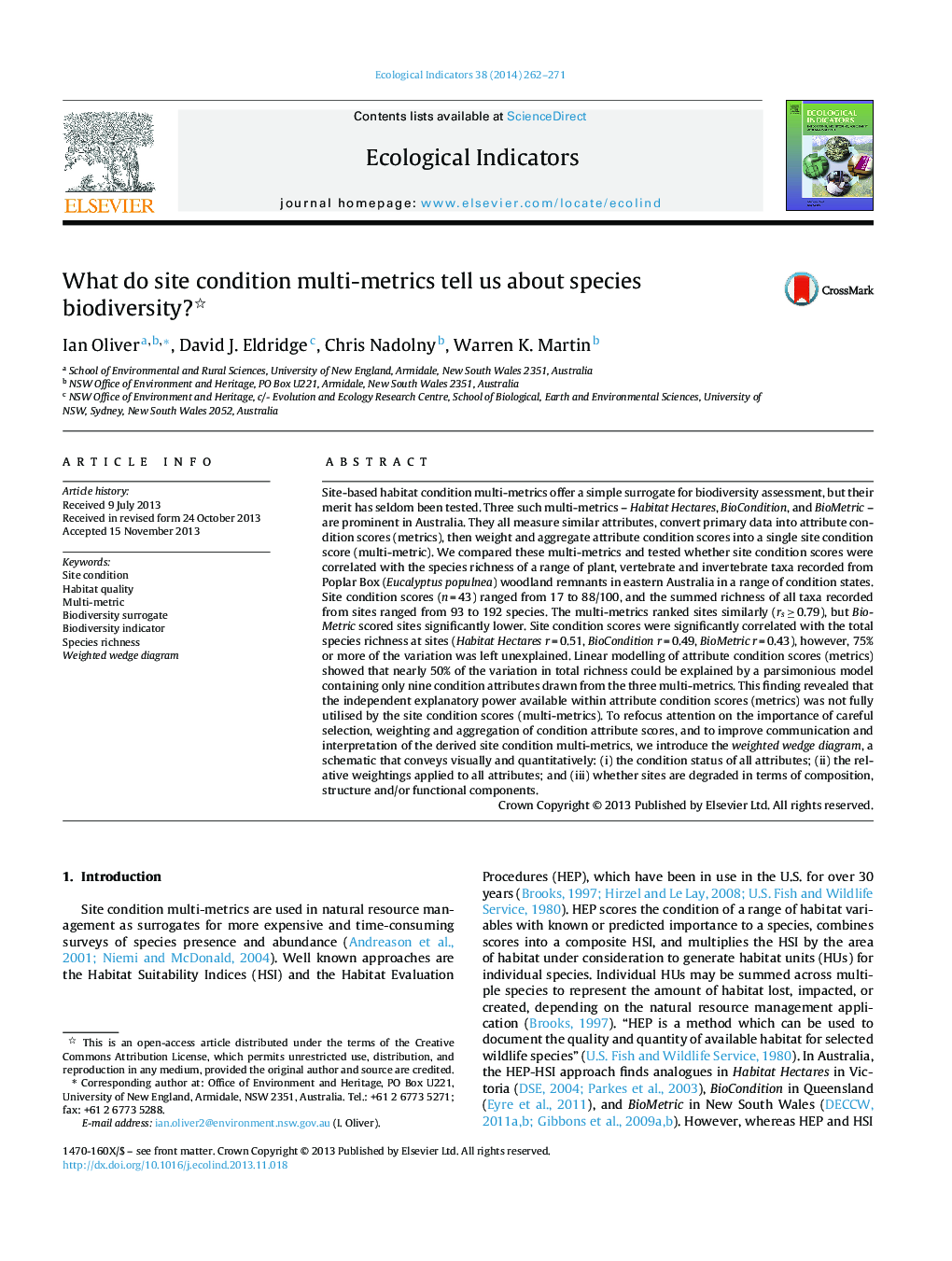| Article ID | Journal | Published Year | Pages | File Type |
|---|---|---|---|---|
| 6295201 | Ecological Indicators | 2014 | 10 Pages |
Abstract
Site-based habitat condition multi-metrics offer a simple surrogate for biodiversity assessment, but their merit has seldom been tested. Three such multi-metrics - Habitat Hectares, BioCondition, and BioMetric - are prominent in Australia. They all measure similar attributes, convert primary data into attribute condition scores (metrics), then weight and aggregate attribute condition scores into a single site condition score (multi-metric). We compared these multi-metrics and tested whether site condition scores were correlated with the species richness of a range of plant, vertebrate and invertebrate taxa recorded from Poplar Box (Eucalyptus populnea) woodland remnants in eastern Australia in a range of condition states. Site condition scores (n = 43) ranged from 17 to 88/100, and the summed richness of all taxa recorded from sites ranged from 93 to 192 species. The multi-metrics ranked sites similarly (rs â¥Â 0.79), but BioMetric scored sites significantly lower. Site condition scores were significantly correlated with the total species richness at sites (Habitat Hectares r = 0.51, BioCondition r = 0.49, BioMetric r = 0.43), however, 75% or more of the variation was left unexplained. Linear modelling of attribute condition scores (metrics) showed that nearly 50% of the variation in total richness could be explained by a parsimonious model containing only nine condition attributes drawn from the three multi-metrics. This finding revealed that the independent explanatory power available within attribute condition scores (metrics) was not fully utilised by the site condition scores (multi-metrics). To refocus attention on the importance of careful selection, weighting and aggregation of condition attribute scores, and to improve communication and interpretation of the derived site condition multi-metrics, we introduce the weighted wedge diagram, a schematic that conveys visually and quantitatively: (i) the condition status of all attributes; (ii) the relative weightings applied to all attributes; and (iii) whether sites are degraded in terms of composition, structure and/or functional components.
Related Topics
Life Sciences
Agricultural and Biological Sciences
Ecology, Evolution, Behavior and Systematics
Authors
Ian Oliver, David J. Eldridge, Chris Nadolny, Warren K. Martin,
